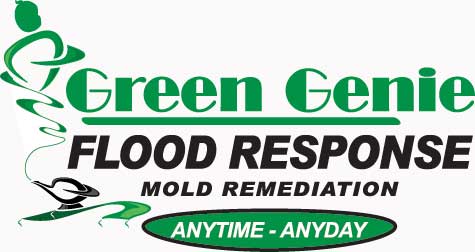An apartment ceiling water leak can do serious damage to furniture and possessions, but pinpointing who’s to blame can be challenging.
Check your landlord’s lease and online government resources for information regarding apartment renter rights and responsibilities, and invest in renter’s insurance to cover ceiling damage as well as personal property loss.
1. Identify the Source of the Leak in New York
Water damage in an apartment can be extremely disruptive. Aside from obvious physical damage, it can also wreak havoc with possessions and lead to health concerns like mold and mildew growth. Therefore, taking immediate steps against water damage in order to reduce its long-term repercussions is imperative.
Step one in finding out where a leak exists is to identify its source. A fast and easy way of doing this is to look out for standing puddles of water or moisture stains on ceiling or walls, or any musty smell that might indicate hidden leaks within walls that can eventually lead to structural problems and mold issues in the future.
Professional water restoration companies can assist in this process. They will clean, sanitize and dry any affected areas in your apartment, such as carpets and furniture. In addition, they can assist with filing an insurance claim claim on your behalf.
Your lease agreement should outline whether any damage caused to your apartment is covered under rent. Furthermore, making a list of damaged belongings to submit as evidence against restoration companies increases your chance of getting money to replace these items.
Water leaks in New York apartments may result from any number of causes, from broken appliances and pipes, to construction projects or clogged sewer lines. If you’re uncertain who’s to blame, consulting a professional restoration service might help to pinpoint its source.
If there’s a leak in your apartment’s ceiling, it is critical that you act quickly. Otherwise, water could flood into your belongings and even travel down into neighboring apartments below – potentially causing severe and expensive water damage in both units. Pay particular attention around appliances like your washing machine, dishwasher and air conditioning unit in case they too become affected by leakage.
- Locate the leak. The first step is to locate the source of the leak. This may be difficult, as leaks can often be hidden behind walls or under floors. However, there are a few things you can do to help you find the leak.
- Look for signs of water damage, such as wet spots on the ceiling, walls, or floors.
- Listen for the sound of running water.
- Check for any loose or damaged pipes.
- Turn off the water supply. Once you have located the leak, you will need to turn off the water supply to the area. This will prevent the leak from getting worse and causing further damage.
- Repair the leak. Once the water supply has been turned off, you can begin to repair the leak. The specific steps involved in repairing a leak will vary depending on the cause of the leak. However, some common methods of repairing leaks include:
- Using a pipe repair kit. These kits typically contain epoxy resin and a hardener that can be used to seal small leaks.
- Replacing a damaged pipe. If the leak is caused by a damaged pipe, you will need to replace the pipe. This may require the services of a plumber.
- Installing a new faucet. If the leak is coming from a faucet, you may need to install a new faucet.
- Clean up the area. Once the leak has been repaired, you will need to clean up the area. This includes removing any water that has leaked and drying the area. You may also want to use a dehumidifier to help remove any moisture from the air.
- Prevent future leaks. Once the leak has been repaired, you can take steps to prevent future leaks. This includes:
- Inspecting your pipes regularly for signs of damage.
- Replacing old or damaged pipes.
- Installing leak detectors.
- Keeping your home well-maintained.
2. Shut Off the Water
If there’s water coming in from outside, try to stop it by closing off exterior drains. This can help avoid further flooding or mold from developing; if necessary, call in professional help; while taking measures now to deal with what water there already is in your apartment or home.
Buckets and rags should be used to drain off as much of the excess water as possible from the affected area. Furniture or appliances too water damaged to be salvaged will likely need to be disposed of, along with any food or clothing contaminated by floodwater.
Before beginning to dry out and repair any damages to your apartment, you must shut off the water supply. If you’re unfamiliar with where this can be found, look for an visible metal cover near a window or basement that displays “main water valve”. Once water has been shut off, take steps to dry out and repair any existing damages as quickly as possible.
Time taken for an area to dry depends on its severity of damage and type of materials affected, typically anywhere from 72 hours up to one month for complete drying of an affected space.
Once you’ve shut off the water, contact your landlord immediately to inform them. They should dispatch someone immediately to begin cleaning up. It would also be prudent to save an emergency maintenance number and contact information for your building as well as that of your landlord so you can stay in contact if needed.
If your ceiling has flooded as the result of internal issues like clogged pipes, such as those in an upstairs apartment complex, then responsibility lies with your landlord to address this matter. Otherwise, this issue could fall on other residents as well.
If your apartment is completely inhabitable, you may be eligible to break your lease early without penalty or negotiate a new rental agreement. Additionally, family and friends could provide temporary accommodation while repairs take place.
3. Dry Out the Area
As soon as you can, it is essential to remove your valuables and as much of your stuff from the water and away from any potential damage as quickly as possible. Doing this increases your odds of saving or restoring what remains.
Once your possessions have been safely moved away from the flooding area, it’s time to contact an apartment water restoration company for water extraction and drying services. Before making this call, however, be sure to review your lease to determine your responsibilities regarding water damage in an apartment building – some companies won’t do any structural work without first receiving written permission from their landlord – especially for tasks like replacing drywall or other items affected by moisture damage.
An apartment that has been flooded should be thoroughly dried out as quickly as possible to avoid mold growth, which can be extremely hazardous to health and cause further issues later on. Being proactive about drying out will prevent further issues and save on costs for repairs.
Fans and large capacity dehumidifiers can help distribute air, and disinfecting areas that were submerged in floodwater to kill bacteria and other organisms is also key. Also keep in mind that water can seep into porous materials like carpet and wood; to remove and replace such items.
If walls or floors begin to buckle or warp, it’s essential that they notify their landlord as soon as possible. In many instances, this may require professional technicians being sent in to assess the extent of any damages that have occurred.
Living in New York City means renting small spaces shared among multiple tenants, and one water leak in an upstairs apartment could quickly spread throughout the building due to plumbing lines running through common spaces such as hallways and stairwells – when one of these malfunctions, causing flooding damage for all units in that building.

4. Repair the Damage
Once water damage is discovered, it’s critical that it be remedied quickly. Failure to do so could lead to mold growth or other types of bacterial contamination that threaten health, leading to additional issues and medical implications. Professional technicians specialize in disinfecting, drying and restoring affected areas so as to avoid future issues arising.
When possible and safe to do so, it is also a wise move to relocate any valuables out of harm’s way. Once everything has been moved out of harm’s way, open windows and plug in fans to start drying processes – this can also help eliminate musty smells that often accompany wet ceiling materials.
Once damage has occurred, document the extent of it if possible – this will help when determining who should pay for repairs and cleanup efforts.
Your landlord may be held liable if flooding occurred as the result of issues in their building or due to negligence from an upstairs tenant. If they refuse to be forthcoming about their responsibilities, legal action may be available against them.
Renters insurance can be an invaluable protection, no matter whether or not it is mandated by your landlord. Your policy can cover damage from natural disasters, floods or any other event as well as moving fees while your own apartment is repaired.
If the water damage in your apartment is extensive, it may be necessary to break your lease and relocate temporarily while repairs can be made by your landlord. In such an instance, it’s crucial that you discuss the available options with both parties as soon as possible and the process for making arrangements. Also reach out to NYS Homes and Community Renewal’s local office and see what assistance is available – they may help find temporary housing as well as provide information on other resources in your community.






